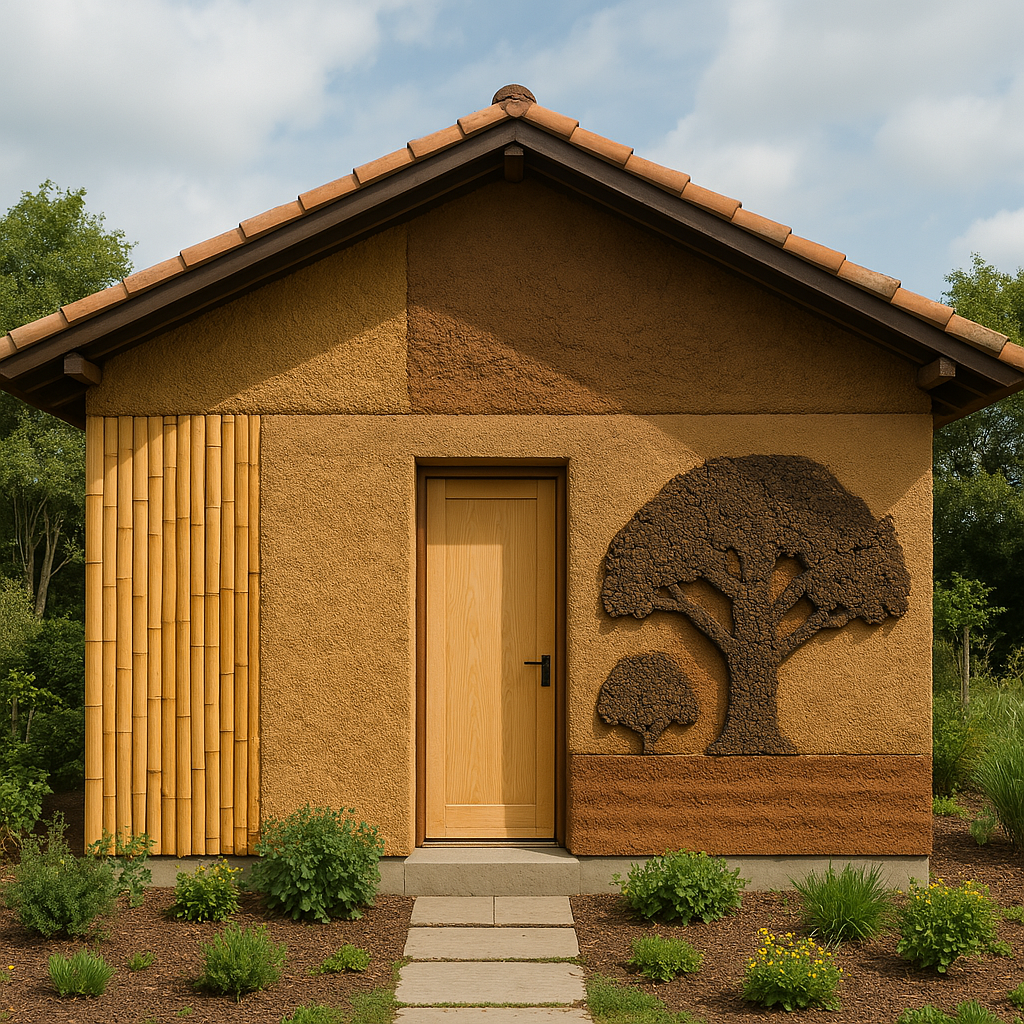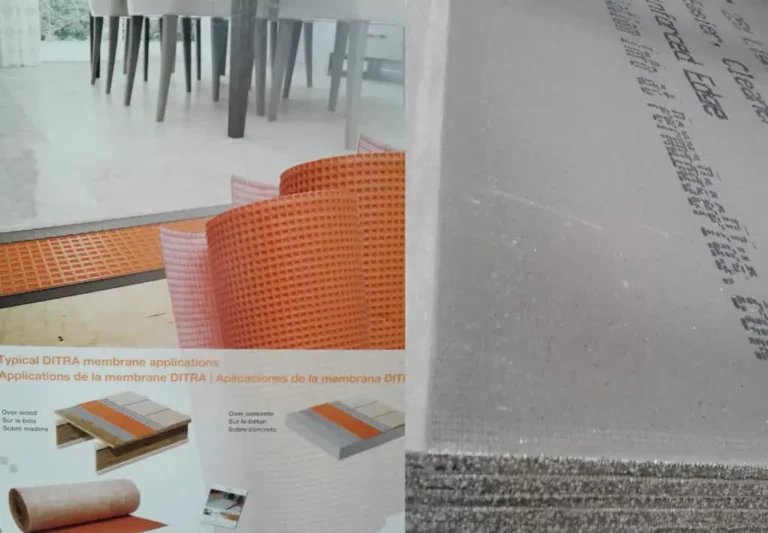Eco-Friendly Materials for Sustainable Home Projects

When you’re starting on a sustainable home project, choosing the right materials can make all the difference. Eco-friendly options aren’t just kind to the planet; they also enhance your living space’s comfort and efficiency. From natural insulators like cob to the versatility of bamboo, each material brings unique benefits. Understanding these options can help you create a greener environment, but deciding which one to use requires careful consideration. Let’s explore these materials further.
Cob: The Natural Insulator
When you think about sustainable home building, cob stands out as a compelling option due to its unique insulation properties. With an R-value of 0.22 per inch, it may not seem like a stellar insulator, but its thermal mass offers benefits that can stabilize indoor temperatures. In regions with wide temperature swings, cob absorbs heat during the day and releases it at night, reducing your HVAC needs. If you live in a colder climate, pairing cob with supplementary insulation like hemp-straw mixes can enhance efficiency. Its durability and natural appeal foster a sense of belonging to your home and community, making cob not just a building material, but a connection to a sustainable future. Additionally, cob walls act as hygroscopic materials, stabilizing indoor humidity levels, which helps prevent mold growth and improves overall indoor air quality.
Bamboo: A Rapidly Renewable Resource
Cob’s natural insulation makes it an appealing choice for sustainable homes, but bamboo takes sustainability to another level with its rapid renewability. You’ll love that bamboo can be harvested in just 3-5 years, unlike traditional timber that takes decades. This amazing plant sequesters up to 17 tonnes of CO2 per hectare annually and has a self-regenerating root system, eliminating the need for replanting. With impressive tensile strength, bamboo rivals steel while its compressive strength matches concrete, offering durability for your home. It’s not just strong; bamboo is also water-resistant and naturally fire-resistant. By choosing bamboo, you’re not only embracing a stylish and versatile material but also contributing to a more sustainable future for all of us. Additionally, bamboo continues storing carbon after being processed into building materials, making it an even more attractive option for eco-friendly construction.
Cork Oak Bark: Sustainable Sound Absorption
Cork oak bark stands out as an exceptional choice for sustainable sound absorption, especially since it can be harvested without causing harm to the trees. When you choose cork, you’re embracing a material that not only benefits the environment but also enhances your living space. Here are three key reasons to contemplate cork oak bark:
- Renewable Resource: It’s harvested every nine years without damaging trees, allowing them to grow for over 200 years. Additionally, cork’s unique cellular structure allows for excellent sound-absorbing characteristics, making it particularly effective for noise reduction.
- Superior Sound Absorption: With its cellular structure, cork effectively traps sound waves, reducing echoes considerably.
- Eco-Friendly: Completely recyclable and biodegradable, cork supports a greener lifestyle while keeping your home aesthetically appealing.

Rammed Earth: Energy-Efficient Building
Rammed earth construction transforms natural materials into energy-efficient homes that harmonize with the environment. By using stabilizers like lime and clay instead of cement, you considerably lower your carbon footprint. Imagine saving 56% on heating costs while maintaining cozy indoor temperatures, thanks to thermal mass that stabilizes your home. You’ll also enjoy a 42% boost in energy efficiency compared to traditional building methods. Moreover, replacing one stick frame home with an SRE home can reduce greenhouse gas emissions by 67 tons of CO2 per decade. Plus, with locally sourced materials, you not only support your regional economy but also reduce transport emissions. The durable, recyclable nature of rammed earth means your home will stand strong for generations, creating a legacy of sustainability that you can proudly share with your community. Embrace rammed earth construction for a greener tomorrow!
Stone: Longevity and Low Maintenance
After exploring the energy-efficient benefits of rammed earth construction, it’s time to contemplate another remarkable building material: stone. When you choose stone for your home, you’re investing in longevity and low maintenance that outlasts other materials. Consider these key benefits:
Stone offers unparalleled longevity and low maintenance, making it an exceptional choice for sustainable and lasting home construction.
- Durability: Stone can last over 100 years, requiring minimal repairs and replacements. Its thermal mass properties help in maintaining indoor temperatures, further enhancing comfort and energy efficiency.
- Low Maintenance: Just a bit of dusting and sealing every 5-10 years keeps it looking great without harsh chemicals.
- Environmental Sustainability: Naturally sourced, it’s free from toxic processes and can be repurposed.
Recycled Materials: Giving New Life to Old Products
When you consider sustainable home projects, recycling materials not only breathes new life into old products but also minimizes waste and conserves resources. Utilizing recycled concrete, for example, reduces reliance on natural resources while ensuring structural integrity. You can be inspired by projects like Manifesto Eco House, which repurposes demolished site materials to limit extraction. Salvaged steel frames offer cost-effective strength, while recycled aluminum metal roofing guarantees durability. Don’t forget about reclaimed wood; it preserves architectural heritage and provides longevity. Finally, using recycled plastics can create innovative structures, such as bamboo-clad homes. Recycling construction waste can significantly reduce the environmental pollution caused by discarded materials. Every choice you make in incorporating recycled materials fosters community and belonging while making a positive impact on our environment. You’re part of something greater!
Choosing the Right Eco-Friendly Material for Your Project
Selecting the right eco-friendly materials can elevate your sustainable home project to the next level, complementing the innovative use of recycled items. To make an informed choice, consider these three options:
- Bamboo: It’s a rapidly renewable resource perfect for flooring and furniture, sequestering carbon as it grows. Additionally, it is 100% biodegradable and eco-friendly when unprocessed, making it a valuable choice for environmentally conscious builders.
- Cork: Sourced from sustainable cork oak trees, it offers excellent thermal insulation and sound absorption.
- High-efficiency window glazing: This minimizes heat transfer, balancing natural light and energy savings.
Each of these materials not only enhances your project’s sustainability but also promotes a healthier living environment. By choosing wisely, you’ll contribute to a greener community and support a collective movement toward eco-friendly living.





